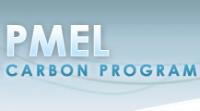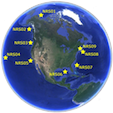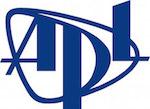Partners
PMEL Partners
PMEL Carbon Program
All OCS moorings are deployed with carbon dioxide and ocean acidification sensors provided by the PMEL Carbon Program. The mission of the PMEL Carbon Program is to advance scientific understanding of the ocean carbon cycle and how it is changing over time in support of NOAA's commitment to improve the Nation's ability to anticipate and respond to climate impacts and to conserve and manage healthy oceans, coastal ecosystems, and marine resources.
Cooperative Institute for Climate, Ocean, and Ecosystem Studies (CICOES)
A leader in the environmental sciences, the Cooperative Institute for Climate, Ocean, and Ecosystem Studies (CICOES) is a partnership between the University of Washington, Oregon State University, and University of Alaska Fairbanks that fosters collaborative, interdisciplinary research. Many of the OCS personnel are CICOES researchers.
Engineering Development Division (EDD)
EDD designed and built the OCS buoy, data logger electronics (hardware and software), sensor housings and mounts, and all mooring components (line, floats, fairings, anchors, etc). In addition, EDD staff have been participants on many of the deployment cruises. EDD supports PMEL research efforts with innovations in the fields of electronics, mechanics, materials, and software engineering.
Global Tropical Moored Buoy Array (GTMBA)
The Global Tropical Moored Buoy Array Project at PMEL provides real-time data from moored ocean buoys for improved detection, understanding, and prediction of El Nino and La Nina. The GTMBA encompasses the TAO array, PIRATA, and RAMA. The first OCS moorings were based on the TAO design, and members of the GTMBA continue to play key roles in the OCS Project.
NOAA Noise Reference Station
Dr. Robert Dziak maintains a Noise Reference Station (NRS) mooring near Ocean Station Papa, which was first deployed in January 2015. With 2-year deployments similar to the waverider mooring, the NRS turnaround operations have often piggy-backed on UW APL cruises. The NRS records the ocean soundscape and is used to detect the presence of whales and other marine mammals. Data produced by the NRS mooring can be accessed through this link to the NCEI database.
National and International Partners
OceanSITES
The OCS moorings are part of the global network of time series stations referred to as Ocean Sustained Interdisciplinary Timeseries Environment observation System (OceanSITES). These stations provide data for the science community, policy makers, and society in order to detect global climate and ecosystem changes, to describe and quantify these changes, to understand and explain them, and to develop a capability to predict them.
Japan Agency for Marine-Earth Science and Technology (JAMSTEC)
The OCS Project maintains a close partnership with the Japan Agency for Marine-Earth Science and Technology (JAMSTEC), for maintenance of the KEO mooring site, and shared research initiatives. Mooring servicing cruises have repeatedly been performed on JAMSTEC ships, and JAMSTEC maintains a sediment trap co-located with the KEO mooring. Files may be downloaded via the following link to the JAMSTEC sediment trap data.
Canadian Department of Fisheries and Oceans - Line P Program
Since its first deployment in 2007, the OCS Ocean Station Papa mooring has been serviced annually during cruises aboard the CCGS J.P. TULLY. Ship time has been provided through partnership with the Line P Program, of the Canadian Institute of Ocean Sciences.
National Science Foundation Ocean Observatories Initiative (OOI)
In July 2013, a cluster of a subsurface profiler mooring and two subsurface “taut line” flanking moorings were deployed near Ocean Station Papa, as part of the Ocean Observatories Initiative (OOI). The OCS Papa mooring serves as the central mooring at the OOI Global Station Papa Array.
North Pacific Carbon Cycle Project (University of Washington)
The "North Pacific Carbon Cycle Project", led by Steve Emerson (University of Washington, School of Oceanography) was funded by the NSF Carbon and Water Cycle for the Earth System program. The overall goal of the project is to identify the importance of mixing and biological processes in controlling the air-sea flux of CO2 in the critical regions north of 35°N. Dr. Emerson's group deploys instruments on both the KEO and Papa moorings, and those data can be found here.
UW APL Waverider
As part of a larger project to understand the impact of surface waves on the ocean mixed layer, a team of scientists from the Applied Physics Laboratory at the University of Washington, led by Jim Thomson, has been measuring waves at Ocean Weather Station Papa. The first deployment was on June 15, 2010 by OCS personnel, with subsequent deployments in October 2012 and early 2015 by the UW. The 2015 Waverider broke free from its mooring and was replaced in 2018.
UW APL Passive Acoustic Listener (PAL) and Current Profiler(s)
Started by Dr. Jeffrey Nystuen, and now maintained by Dr. Jie Yang of the Applied Physics Laboratory at the University of Washington, Passive Aquatic Listener (PAL) instruments investigate the underwater sound field in the ocean, with a technique to acoustically monitor and detect rainfall, winds, and sea state. PAL instruments have been deployed on the Waverider and subsurface ADCP moorings at Ocean Station Papa (OSP), and in many recent years, on the OCS KEO mooring. More recently, Dr. Yang has started investigating near-surface currents and bubble formation at OSP using a newly deployed Nortek Signature 500 current profiler.
Sponsors
NOAA's Global Ocean Monitoring and Observing Program
The OCS Project is primarily funded by NOAA's Global Ocean Monitoring and Observing (GOMO) Program, which exists to provide high-quality long term global ocean observations, climate information, and products to researchers, forecasters, and other users to inform society about the ocean's role in environmental changes.
National Science Foundation
All OCS stations were initiated during process studies funded by the National Science Foundation (NSF). In particular, KEO was initiated during the Kuroshio Extension System Study (KESS), Papa was initiated during the North Pacific Carbon Cycle Study led by S. Emerson (UW), and ARC was deployed during the Agulhas Current Timeseries experiment led by L. Beal (U Miami RSMAS).














